- HubPages»
- Food and Cooking»
- Dietary Restrictions»
- Dietary Restrictions for Health
Gluten Free Living - Basic Pantry Items for Cooking and Baking - Dry Goods
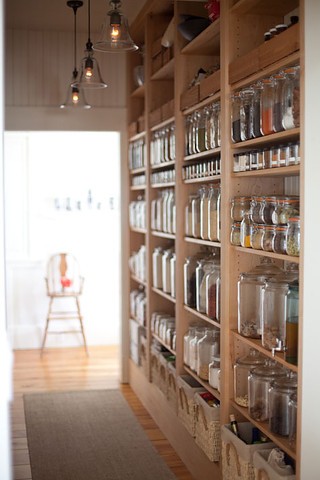
Filling the Pantry
Living gluten free can be a challenge as wheat gluten can be hidden in many ingredients that are used to cook and to bake foods and, especially, in prepackaged foods. I find that the best way around this is to bake and make my own gluten free foods.
I happen to love sweets and baked goods so when I had to restrict my diet, I found the most difficult thing to give up was my baked cookies, cakes, pancakes, bread…. Well, you get the idea.
I continue to restrict my diet, not because I am gluten intolerant, but because relinquishing gluten helps me feel healthier, less tired and more rejuvenated. I have to admit, that I do sneak the odd traditional treat but I do not recommend this if you are intolerant to gluten. As they say, you may not show symptoms of any adverse effects of eating gluten, if you are intolerant, but internal damage may occur from sneaking a morsel that is gluten laden.
When I began my diet restriction, I found it difficult to determine what I needed in my pantry as stock items. This seemed so natural when I was open to all kinds of foods, but one thing you learn quickly with a gluten free diet is how many foods and staples are NOT gluten free friendly. I hope that this list will help you stock your shelves, and please do, as I will be providing scrumptious recipes that will be calling upon these staple ingredients.
Dry Goods
Whole Grains
The only whole grain that I cook with is rice. There are several different types of rice, including wild rice, brown rice, white rice, and sweet rice. These can easily be found in your grocers and health food store.
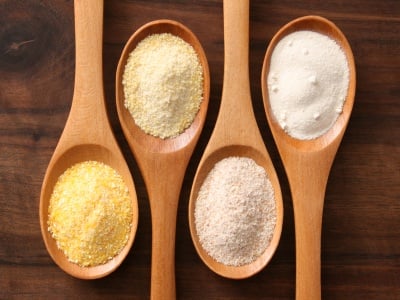
Flours
The most common and most acceptable flours that are gluten free are potato starch, cornmeal, corn flour, rice and cornstarch. These flours can easily be found in your chain grocery store, health food store, on line or in Asian markets. Not only are they readily available, they are relatively inexpensive.
In addition to these types of flours, you can use flour made from soy, tapioca and various beans. There are some draw backs to these. Soy flour has a very strong and distinct taste which can overwhelm the taste that you are trying to achieve when baking. Tapioca flour is more expensive than the other flours, but feel free to use it. It’s wonderful to work with. Bean flours are not readily available while some types of bean flours can cause gas. Finally, if you are baking with soy, tapioca or another type of bean flour, you will have to use more fats, sugars and eggs than you would with the other types of flours.
Flours that you must avoid if you are gluten intolerant are flours that contain gluten. These are wheat, oat, barley, rye and spelt. All these types of traditional flours contain gluten.
There is a grouping of flours which “sit on the fence” as the debate continues as to whether these flours are safe for gluten free diets. Included in this list are buckwheat, millet, quinoa, amaranth and teff. If you are gluten intolerant and wish to remain on your gluten free diet, I would suggest that you avoid these flours until there is solid proof that these are safe to be included in your diet.
Leavening Agents
Leavening agents are the ingredients that help your baked goods rise and when baked, obtain a crispness to it. In general, the traditional baking powder, baking soda and yeast are gluten free. However, always check the label and if you are unsure, contact the manufacturer for more information.
Stabilizers/Gums
All baking requires stabilizers, or binders. Without these, your product would not “come together”. In the case of gluten free baking, the baked good would end up being a pile of crumbs. As in traditional baking, cream of tartar is used to stabilize egg whites when they are being beaten. This helps form stiff beaten eggs without them going runny.
There are two types of gums that are used in gluten free baking. The reason why we use these is to replicate the texture of traditional baked goods. In traditional baked goods, the texture and consistency is achieved by the gluten that is in the flour. In gluten free baking, the gluten has to be replaced in order for the ingredients to come together and stay together.
The first gum is guar gum. When guar gum is used in baking, it produces a spongy texture, which is similar to that in cakes. One word of caution: guar gum is a mild laxative. For moderate portions, there is a very mild effect, but if you were to eat batch after batch of baked goods with guar gum, you might find a bit of gastric distress. If you highly intolerant to guar gum, then you can substitute it with xanthan gum, which is our second type of gum, at a ratio of ¾ teaspoon guar gum: 1 teaspoon xanthan gum.
As with all baking and cooking, the ratios that I provide work well for my climate, altitude and season. You may find that you have to tweak these ratios to accommodate for your climate and altitude.
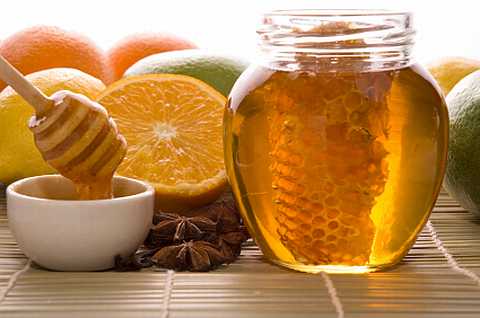
Sugars
Who doesn’t like the sweet stuff?? Brown sugar, white sugar, powdered sugar, honey, molasses and light corn syrup are acceptable in a gluten free diet. However, if you are purchasing a product that has added flavoring, read the label to ensure that there is no added gluten. It is common to find gluten additives in flavored corn syrup. If you are unsure, contact the manufacture to verify that the product is gluten free.
Spices and Herbs
The basic spices that are an integral part of gluten free baking and cooking include salt, pepper, red pepper, coriander, cumin, dill weed, fresh garlic, ginger, sage, oregano, bay leaf, basil, rosemary, cinnamon and nutmeg.
As each of our tastes differ, you may add or remove spices and herbs from this list. If you decide to add to this list, and some of the items you are adding, are a mixture of spices or herbs, be cautious of the extenders or flow agents that are listed. It is common practice to use grains that contain gluten in mixed spices and herbs. Read the label, and if you are unsure, contact the manufacture for processing information and ingredient verification
Spices and Herbs
Gluten Free Flour
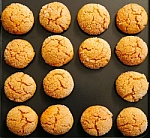
Nuts and Miscellaneous Foods
As there is a restriction on whole grains, I tend to choose a variety of nuts to munch on as they help keep me feeling satiated for a longer period of time. I choose natural nuts which I take home, crack and roast. It takes a bit of effort and time, but well worth it.
For baking, I stock cocoa, peanut butter, unsweetened chocolate, semisweet chocolate and semisweet chocolate chips. For a few recipes, I use a drop or two of red or green food coloring for esthetics but only when I am entertaining. Otherwise, I stay away from anything that is colored.
For my Flourless Peanut Butter Cookies, I use a natural peanut butter which provides an aromatic and full flavored peanut cookie.
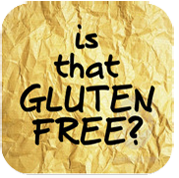
To Be Continued
As a continuation of Gluten Free Living: Where to Find Cooking and Baking Ingredients, Gluten Free Living: Pantry Basics for Cooking and Baking provides suggestions for stocking your gluten free pantry with the basic ingredients so that you can begin cooking and baking. In the next part of this series, I will continue to help you fill your pantry so that you are ready to begin cooking and baking for your gluten free lifestyle!
Copyright Beth100
© September 20, 2011
Start Your Day Right!
Healthy Gluten Free Snacking

Some additonal articles by Beth100 that might be of interest:
- Gluten Free Living - Where and How to Find Gluten Free Cooking and Baking Ingredients
Having to change your traditional diet to a gluten free diet can be daunting. However, with some guidance and suggestions, changing your diet can be simple and successful. This article begins with the basics of transitioning your traditional diet to - Flourless Peanut Butter Cookies
Yes, finally a peanut butter cookie recipe that does not use flour! And, it has an AWESOME taste and texture! Easy to mix, easy to bake and easy to indulge! - Canada: Random and Cool Canadian Facts About This Country
The topic of Canada is as broad as is the country is vast and diverse. Canada is world renowned for its friendliness, cultural diversity, peaceful nature, sprawling lands, fresh air and natural beauty. There is much to discover about this great count - Herbs: Why Should I Use Herbs?












